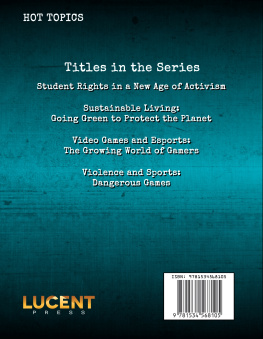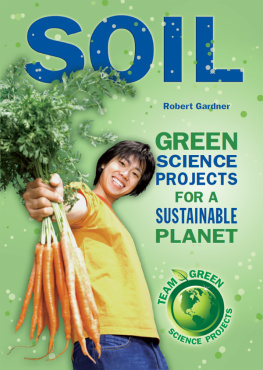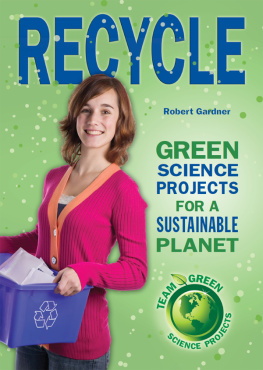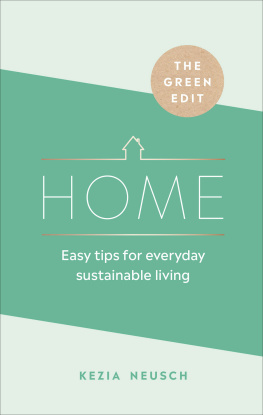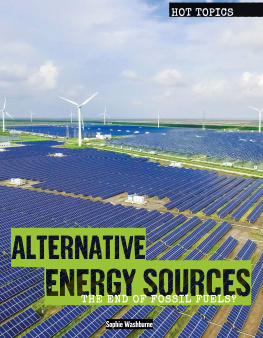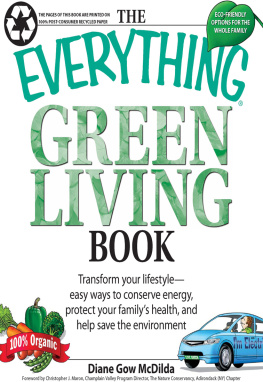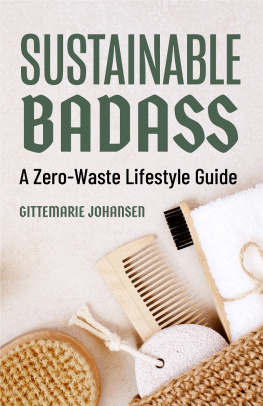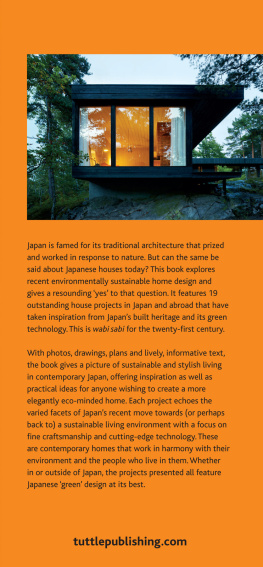
Published in 2020 by
Lucent Press, an Imprint of Greenhaven Publishing, LLC
353 3rd Avenue
Suite 255
New York, NY 10010
Copyright 2020 Greenhaven Press, a part of Gale, Cengage Learning
Gale and Greenhaven Press are registered trademarks used herein under license.
All new materials copyright 2020 Lucent Press, an Imprint of Greenhaven Publishing, LLC.
All rights reserved. No part of this book may be reproduced in any form without permission in writing from the publisher, except by a reviewer.
Designer: Andrea Davison-Bartolotta
Editor: Jennifer Lombardo
Cataloging-in-Publication Data
Names: Burkhart, Juliana.
Title: Sustainable living: going green to protect the planet / Juliana Burkhart.
Description: New York: Lucent Press, 2020. | Series: Hot topics | Includes index.
Identifiers: ISBN 9781534568105 (pbk.) | ISBN 9781534568112 (library bound) | ISBN 9781534568129 (ebook)
Subjects: LCSH: Environmentalism-Juvenile literature. | Energy conservation-Juvenile literature. | Sustainable living--Juvenile literature. | Community life--Environmental aspects--Juvenile literature.
Classification: LCC GE195.5 B86 2020 | DDC 333.79-dc23
Printed in the United States of America
Some of the images in this book illustrate individuals who are models. The depictions do not imply actual situations or events
CPSIA compliance information: Batch #BW20KL: For further information contact Greenhaven Publishing LLC, New York, New York at 1-844-317-7404.
Please visit our website, www.greenhavenpublishing.com. For a free color catalog of all our high-quality books, call toll free 1-844-317-7404 or fax 1-844-317-7405.
CONTENTS
FOREWORD
A dolescence is a time when many people begin to take notice of the world around them. News channels, blogs, and talk radio shows are constantly promoting one view or another; very few are unbiased. Young people also hear conflicting information from parents, friends, teachers, and acquaintances. Often, they will hear only one side of an issue or be given flawed information. People who are trying to support a particular viewpoint may cite inaccurate facts and statistics on their blogs, and news programs present many conflicting views of important issues in our society. In a world where it seems everyone has a platform to share their thoughts, it can be difficult to find unbiased, accurate information about important issues.
It is not only facts that are important. In blog posts, in comments on online videos, and on talk shows, people will share opinions that are not necessarily true or false, but can still have a strong impact. For example, many young people struggle with their body image. Seeing or hearing negative comments about particular body types online can have a huge effect on the way someone views himself or herself and may lead to depression and anxiety. Although it is important not to keep information hidden from young people under the guise of protecting them, it is equally important to offer encouragement on issues that affect their mental health.
The titles in the Hot Topics series provide readers with different viewpoints on important issues in todays society. Many of these issues, such as students rights, are of immediate concern to young people. This series aims to give readers factual context on these crucial topics in a way that lets them form their own opinions. The facts presented throughout also serve to empower readers to help themselves or support people they know who are struggling with many of the challenges adolescents face today. Although negative viewpoints are not ignored or downplayed, this series allows young people to see that the challenges they face are not insurmountable. As increasing numbers of young adults join public debates, especially regarding their own rights, learning the facts as well as the views of others will help them decide where they standand understand what they are fighting for.
Quotes encompassing all viewpoints are presented and cited so readers can trace them back to their original source, verifying for themselves whether the information comes from a reputable place. Additional books and websites are listed, giving readers a starting point from which to continue their own research. Chapter questions encourage discussion, allowing young people to hear and understand their classmates points of view as they further solidify their own. Full-color photographs and enlightening charts provide a deeper understanding of the topics at hand. All of these features augment the informative text, helping young people understand the world they live in and formulate their own opinions concerning the best way they can improve it.
INTRODUCTION
Protecting the Planet
F or thousands of years, humans have relied on fossil fuels to power the things they use every day. Fossil fuels include coal, oil, and natural gas formed from plants and animals that lived hundreds of millions of years ago. They took millions of years to createand it would take millions of years for todays plants and animals to create new fossil fuels. For this reason, they are considered nonrenewable resources.
Many people believe that the use of nonrenewable resources should be limited as much as possible. This can be done in many ways; for example, turning off lights and appliances that are not in use is one of the simplest things someone can do. However, going greenalso known as sustainability because green advocates are working to make sure the earth can continue to comfortably sustain, or support, life of all kindsinvolves going beyond simple practices such as this. Some people are implementing new renewable sources of energy, such as solar power, which creates energy from the sun; hydroelectric energy, which is powered by moving water; and wind energy.
Green advocates also focus on conserving water. This can involve taking shorter showers, turning off the water when brushing teeth, and making sure pipes are not leaky. Some people go beyond these measures by putting in systems to catch rainwater and using it instead of tap water.
Sustainability also involves protecting the land and its resources. Advocates of green living suggest that people think about where they build their homes and communities, preserving enough open space to support different ecosystems. Pollution may kill plants that animals need for survival. As a result, pollution can threaten entire animal species with extinction. Reducing pollution is an important part of green living.

Oil spills such as the one shown here kill plants and animals, and if the oil gets into the water supply, it can threaten human life as well.
Pollution in the Air and Ground
Pollution happens when part of the environment is poisoned or harmed by human activity. Most pollution in the atmosphere is caused when people burn fossil fuels to produce energy. This energy is used to run cars, trains, airplanes, and other vehicles. It is also used to heat, cool, and light homes, businesses, factories, and cities. When fossil fuels burn, they release smoke and invisible gases such as carbon dioxide and nitrogen dioxide. These gases stay in the air, causing pollution.
Air pollution can have a devastating effect on life. It can make people sick. Many people also believe that air pollution is a major factor in global warming. This term describes a worldwide trend that shows the earth is getting warmer. This, in turn, is a major factor in climate change. In some places, such as in Antarctica and on snow-capped mountains, higher temperatures are causing ice to melt. Scientists worry that the melting of the polar ice caps may reduce the habitat of polar bears and other arctic animals, putting them at risk of extinction. Another effect of climate change is more frequent and more severe natural disasters, such as harsh snowstorms.
Next page
